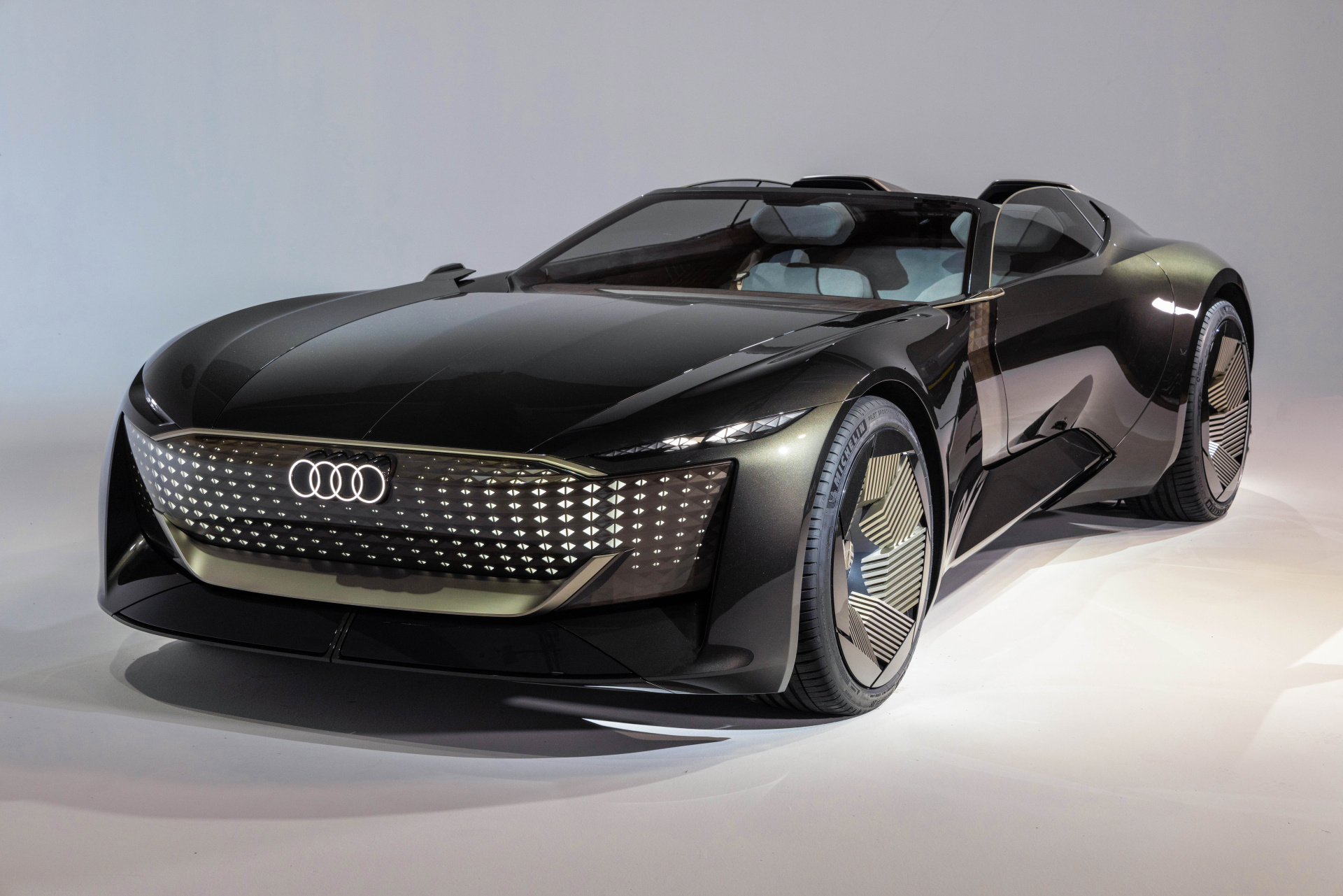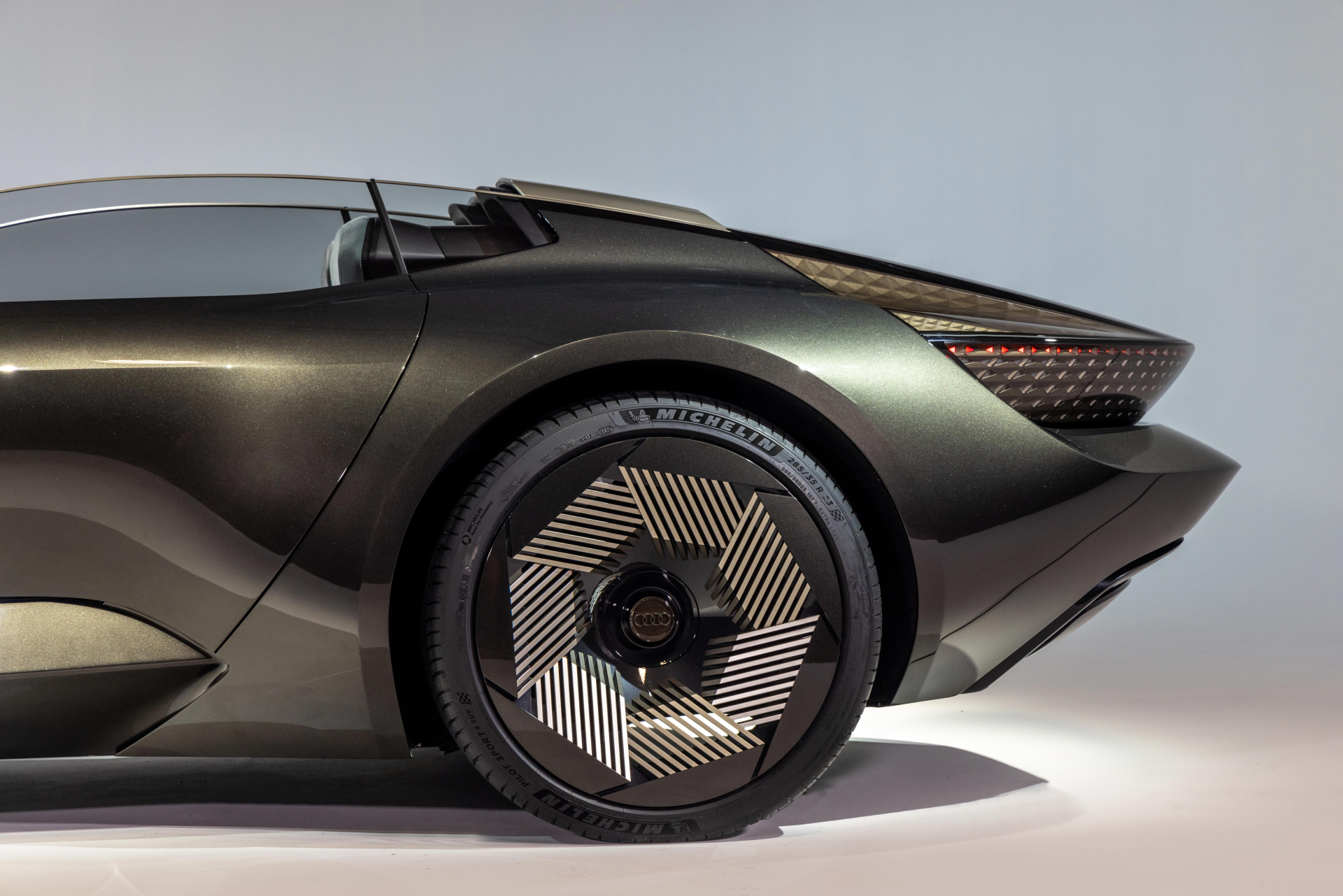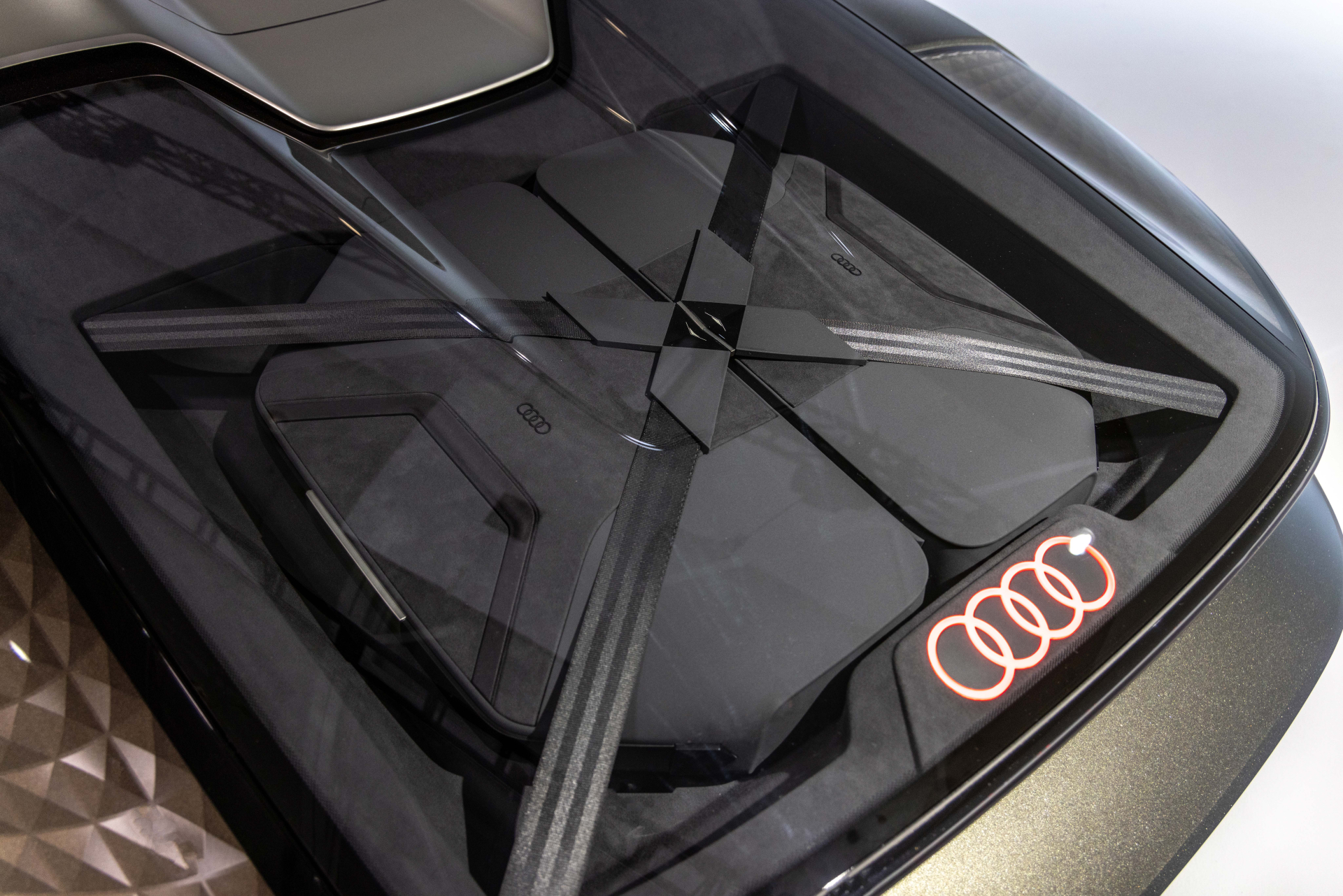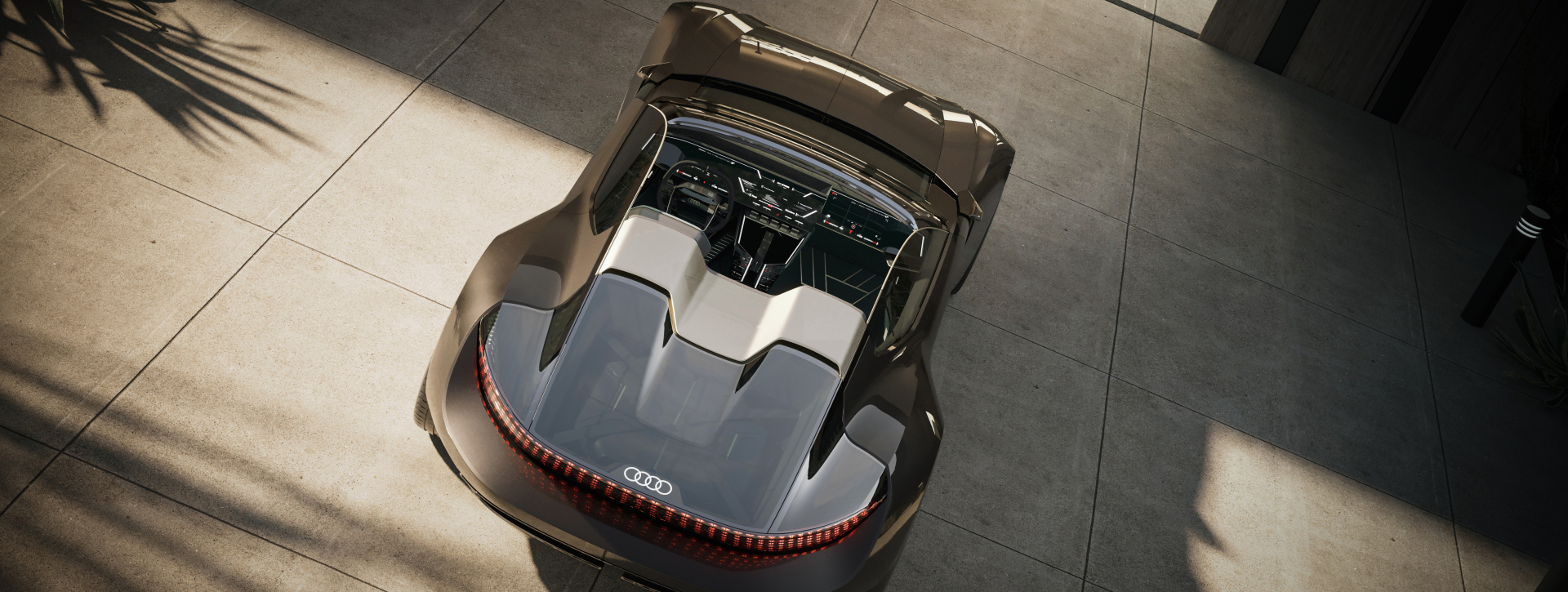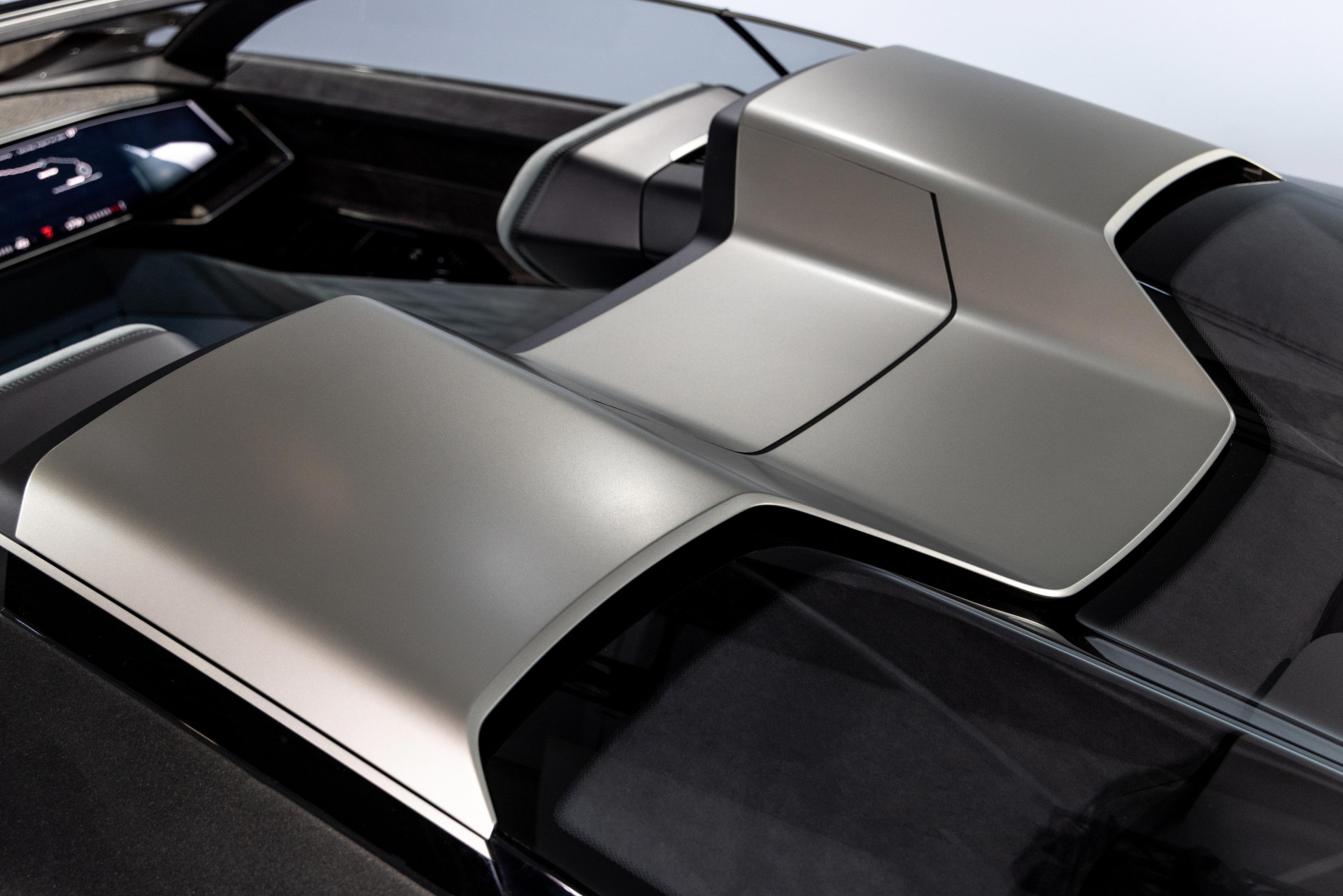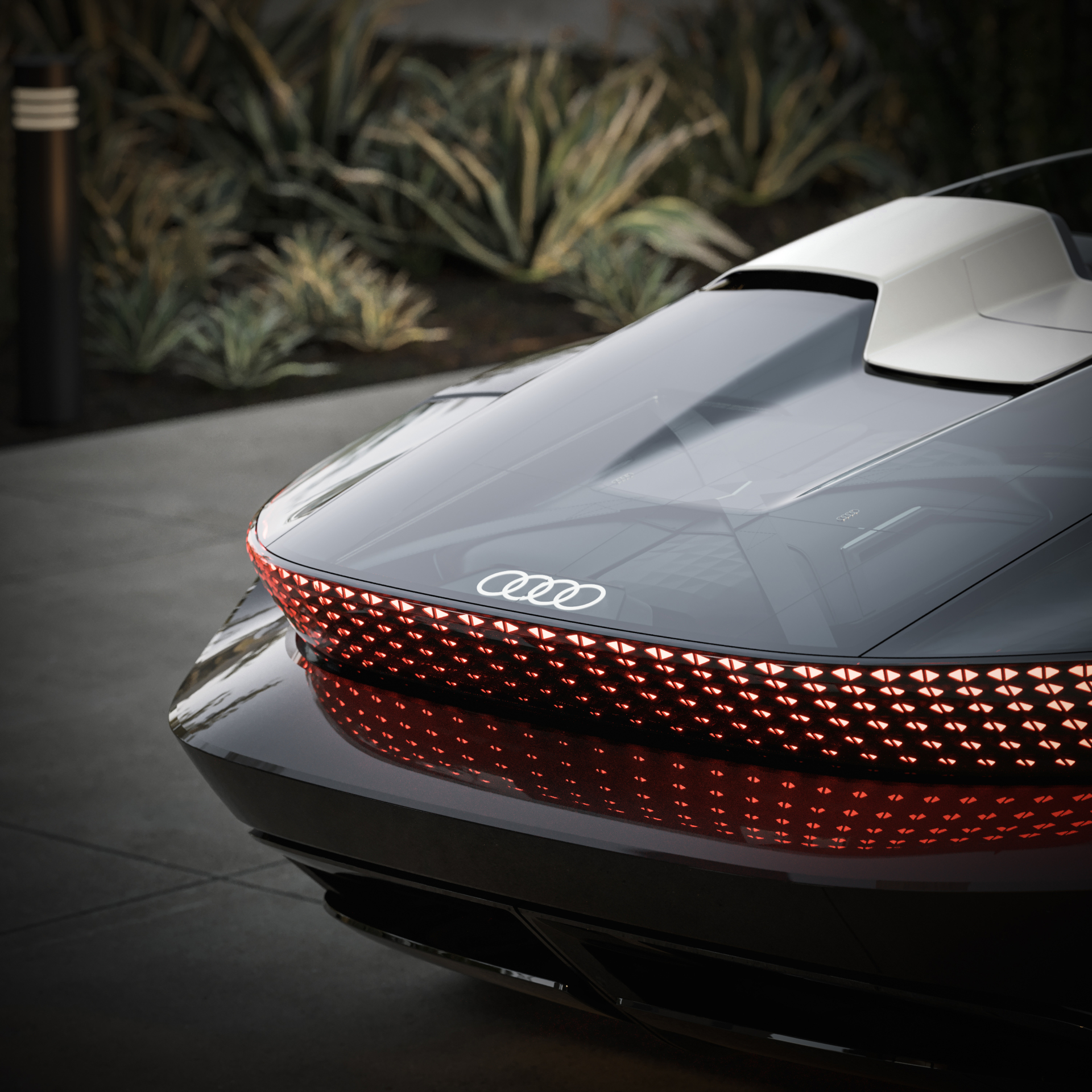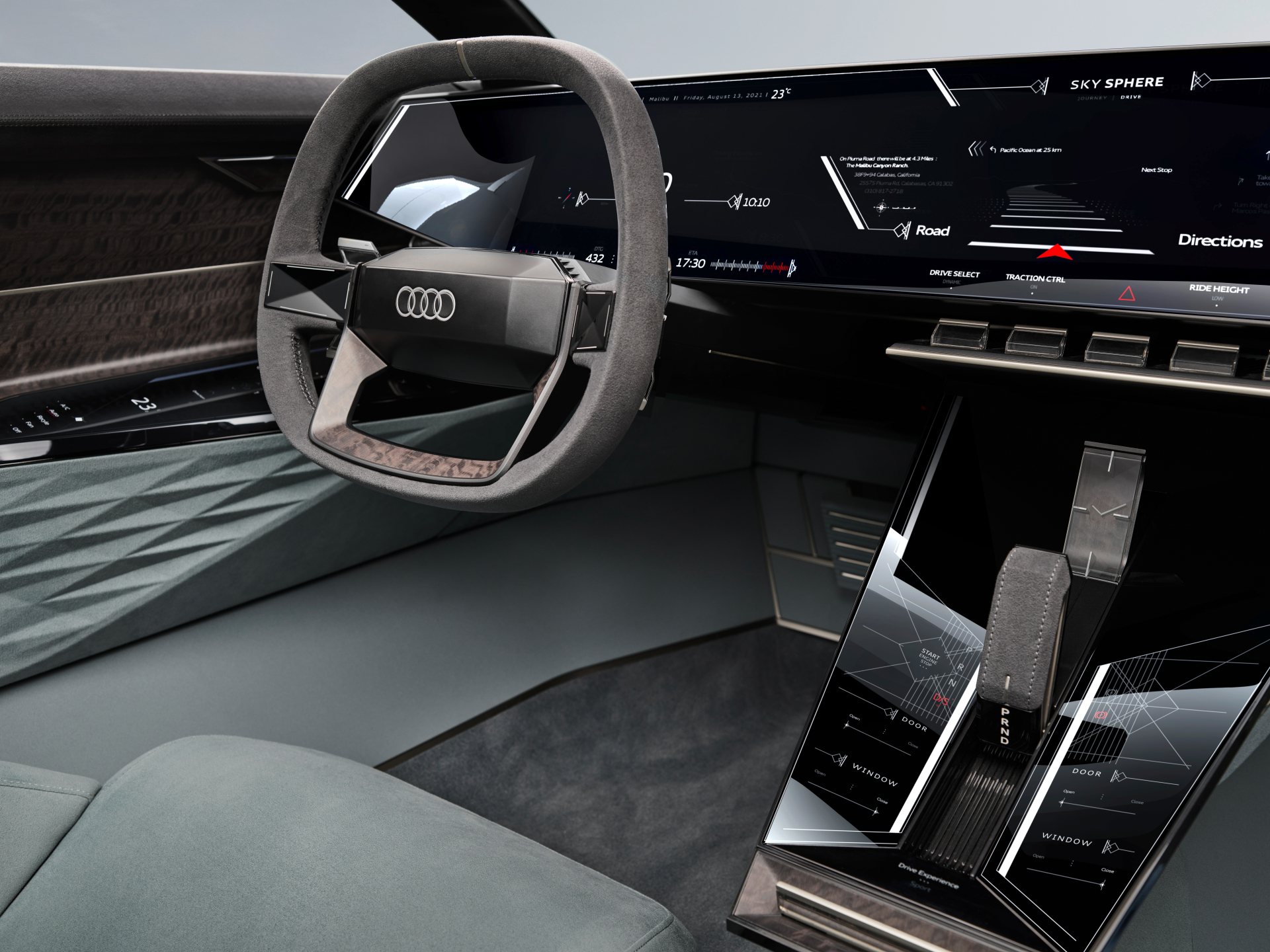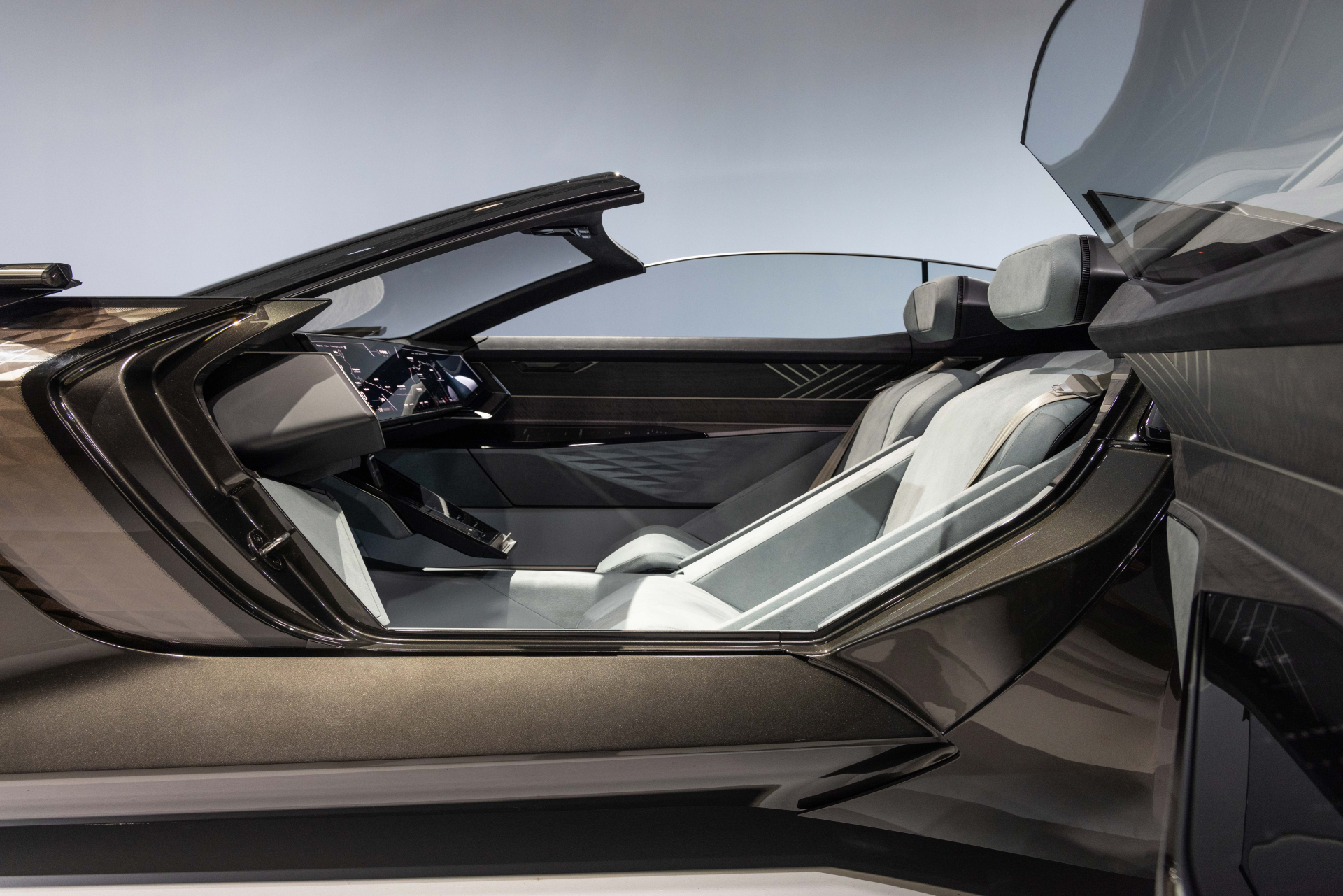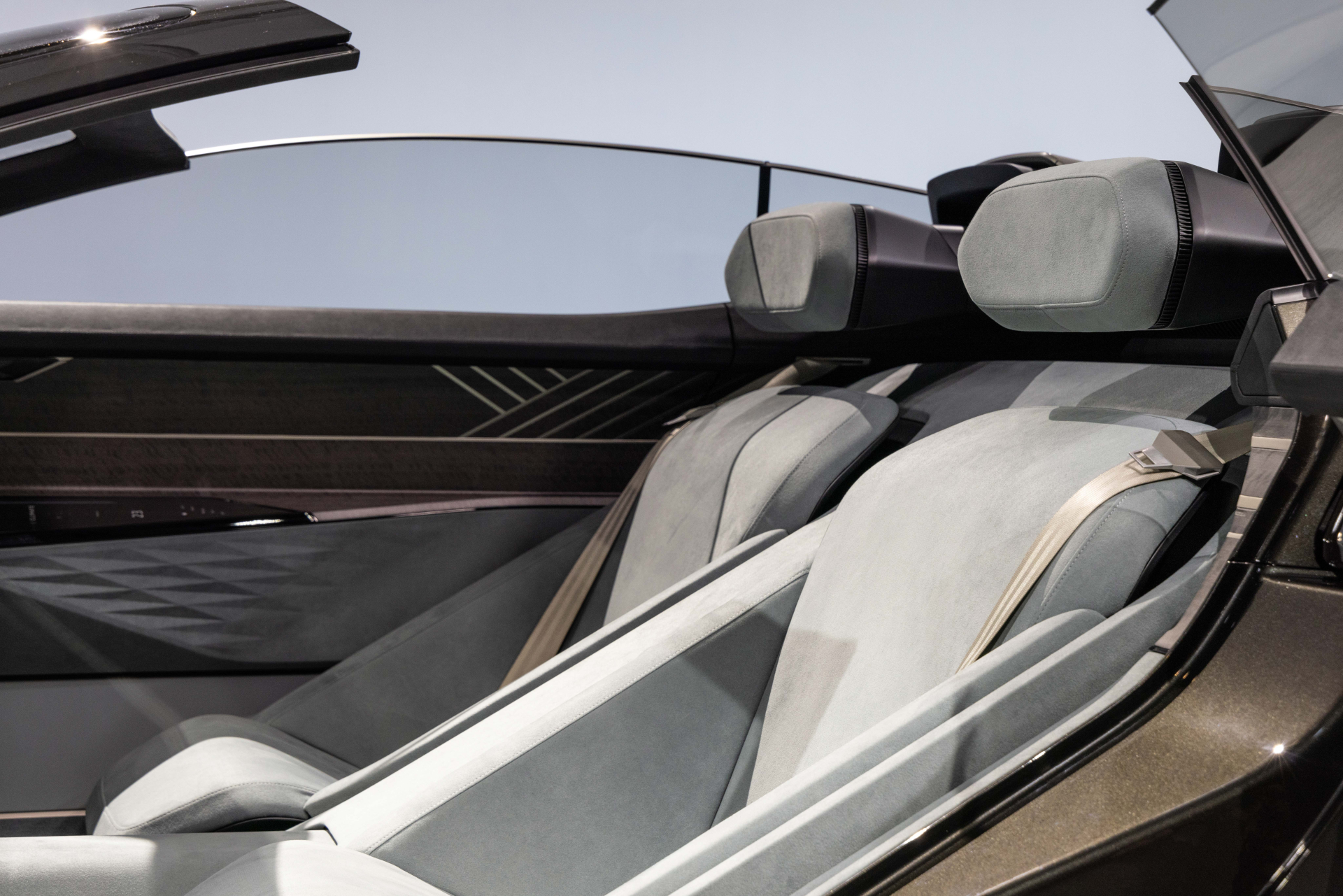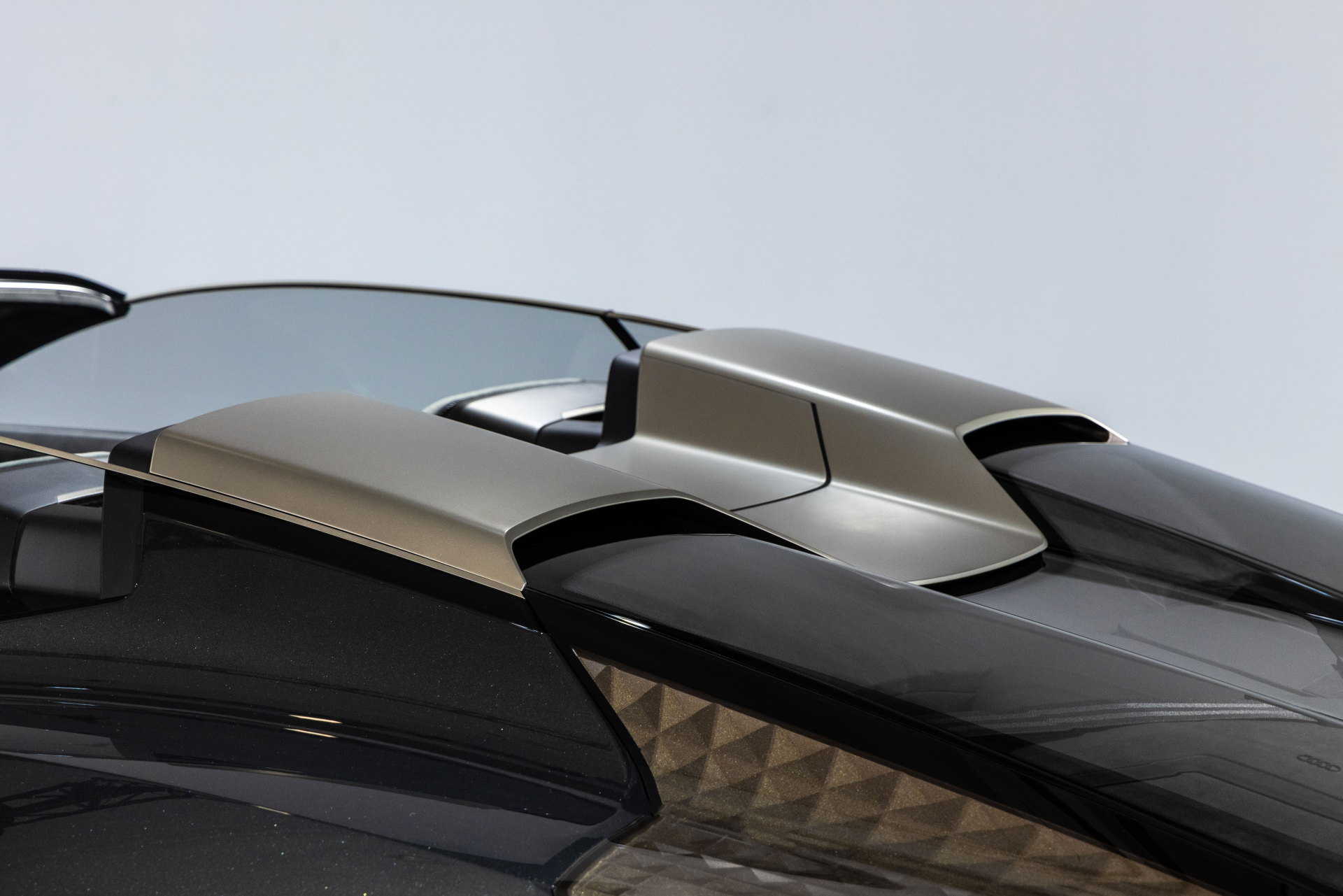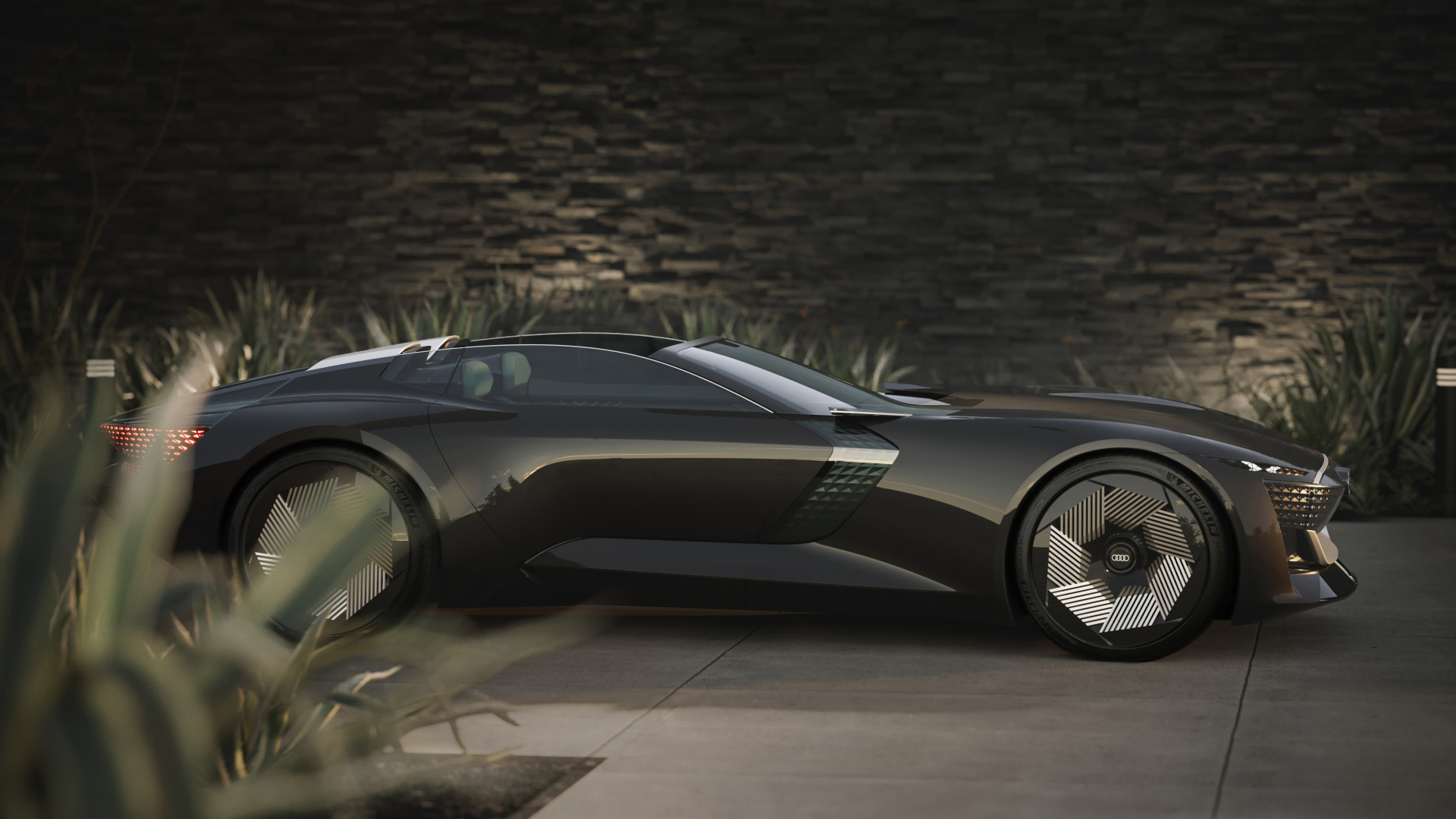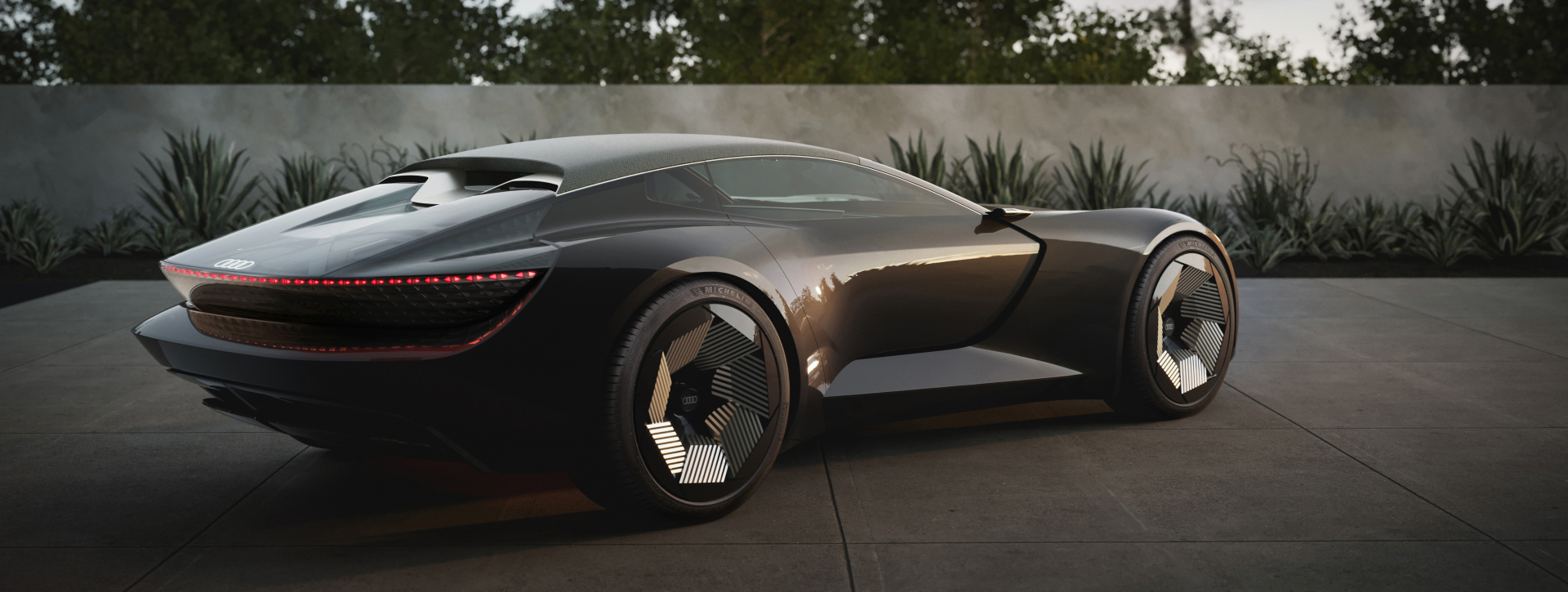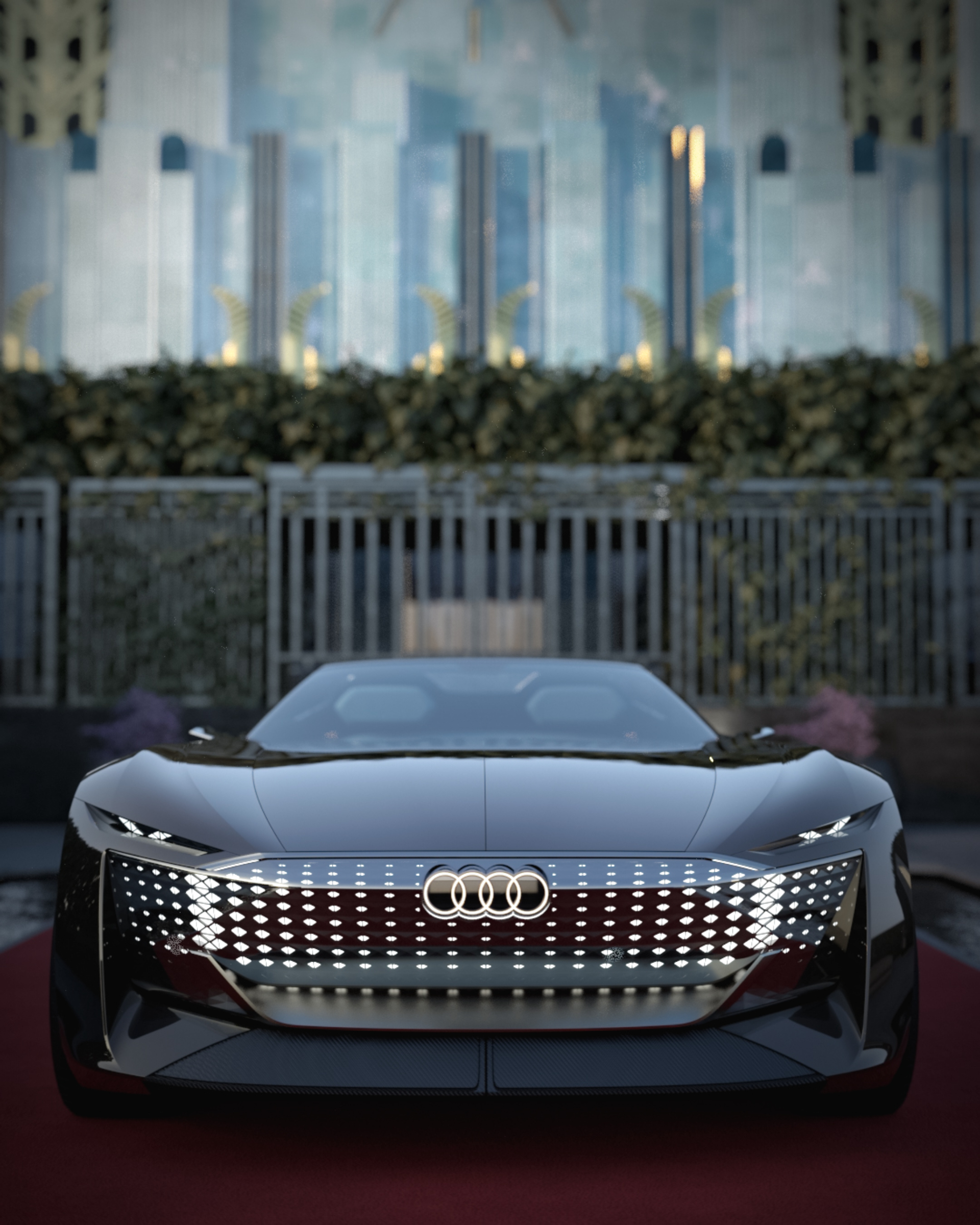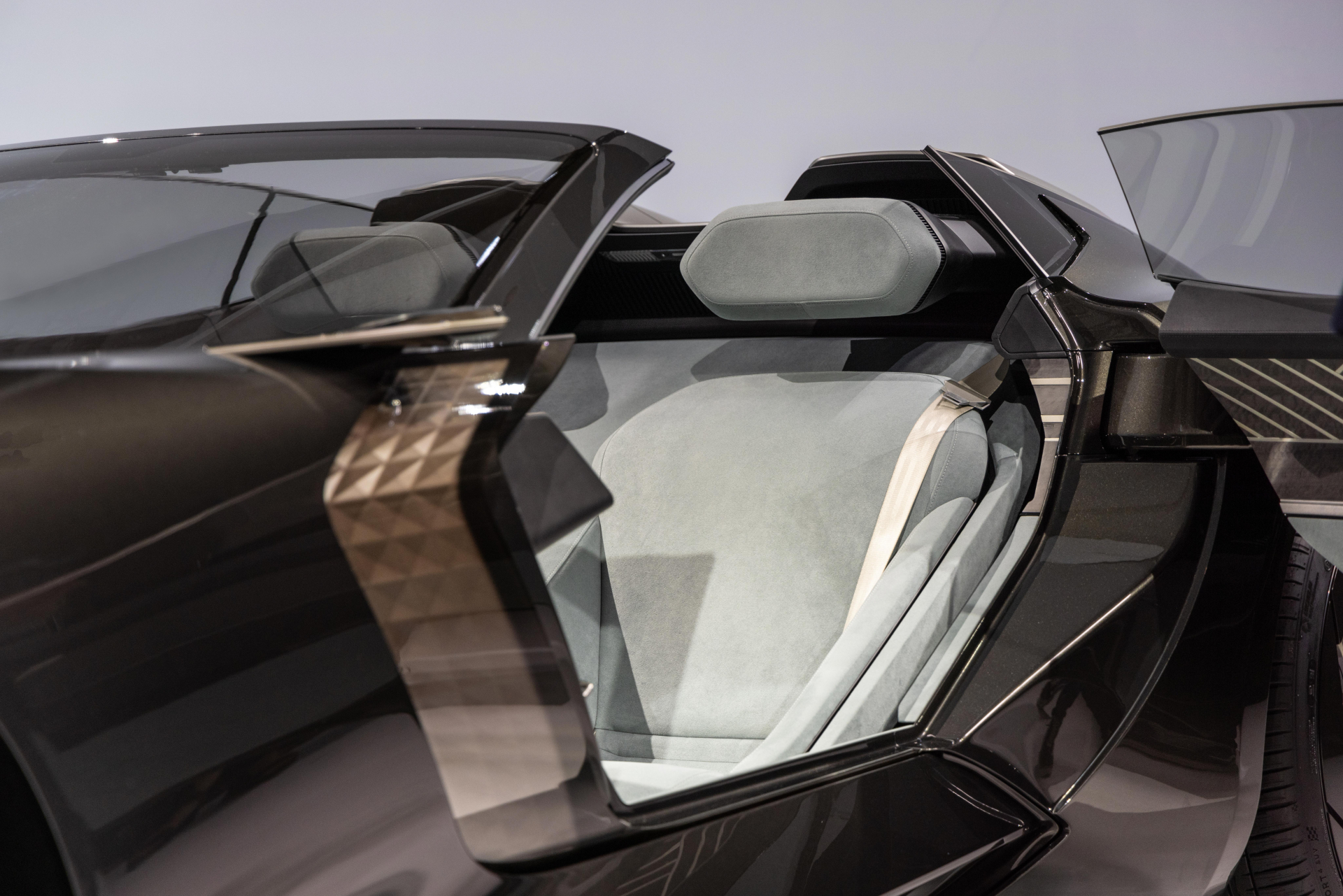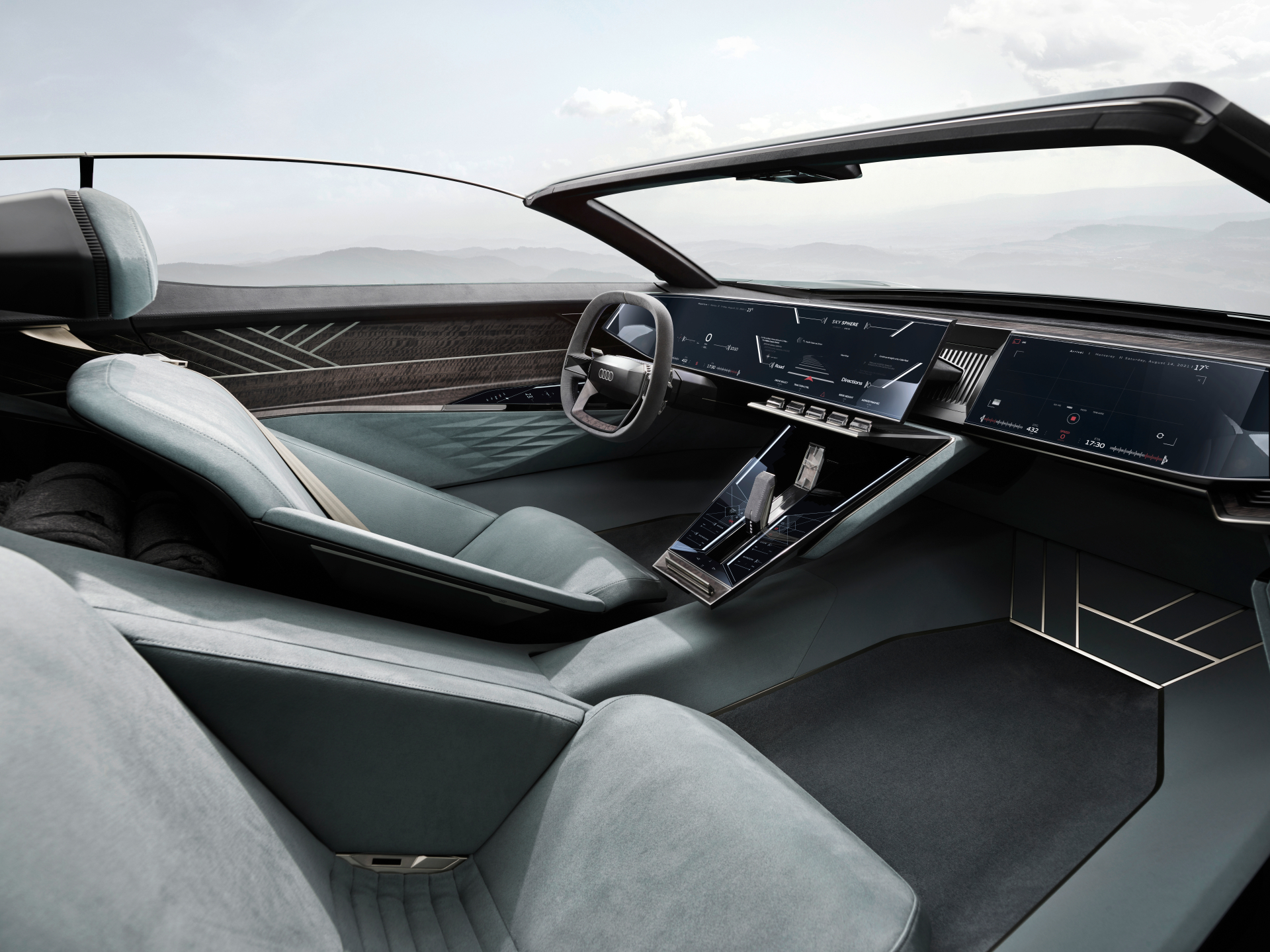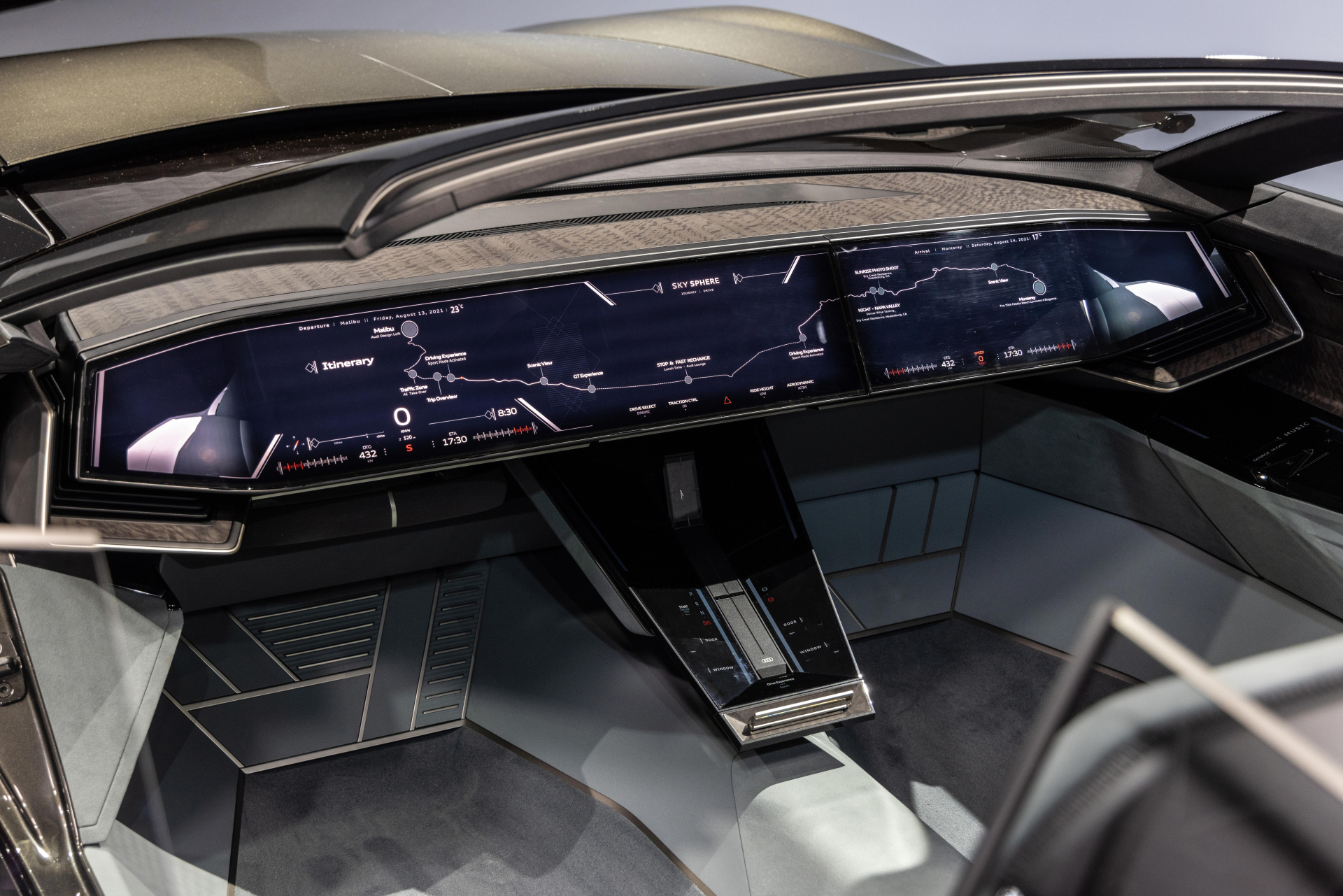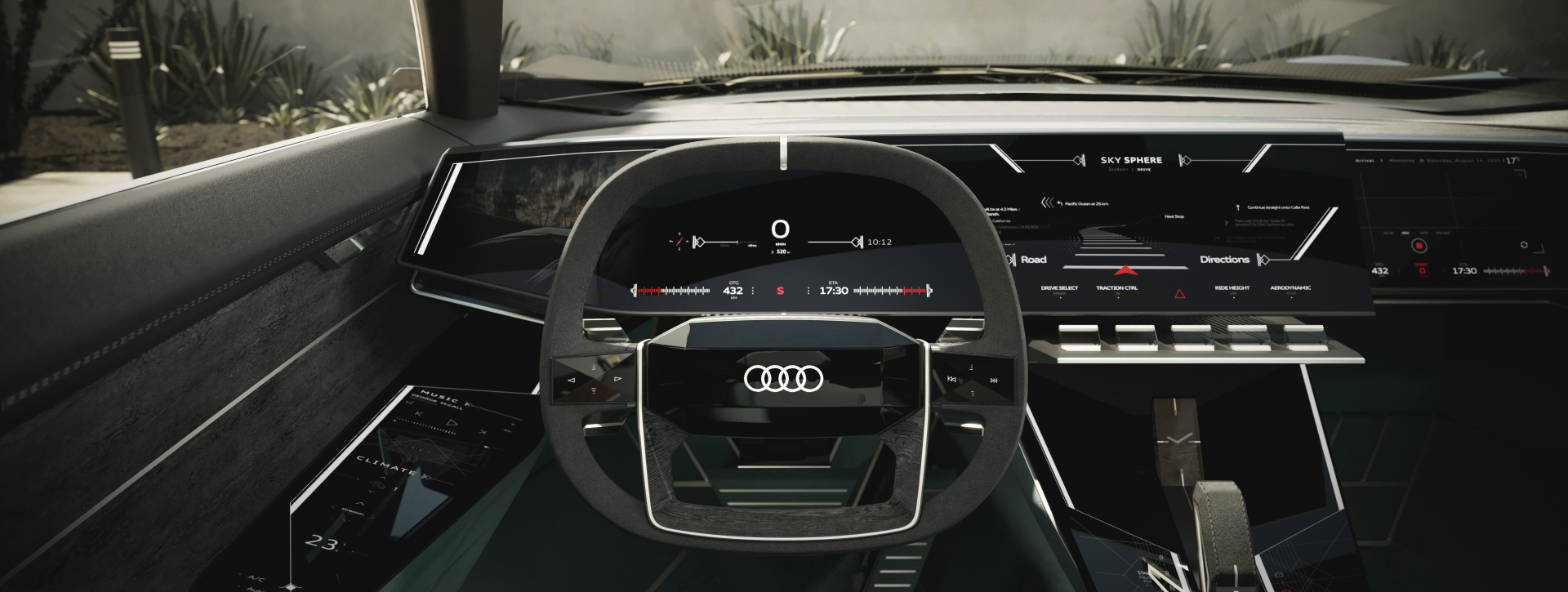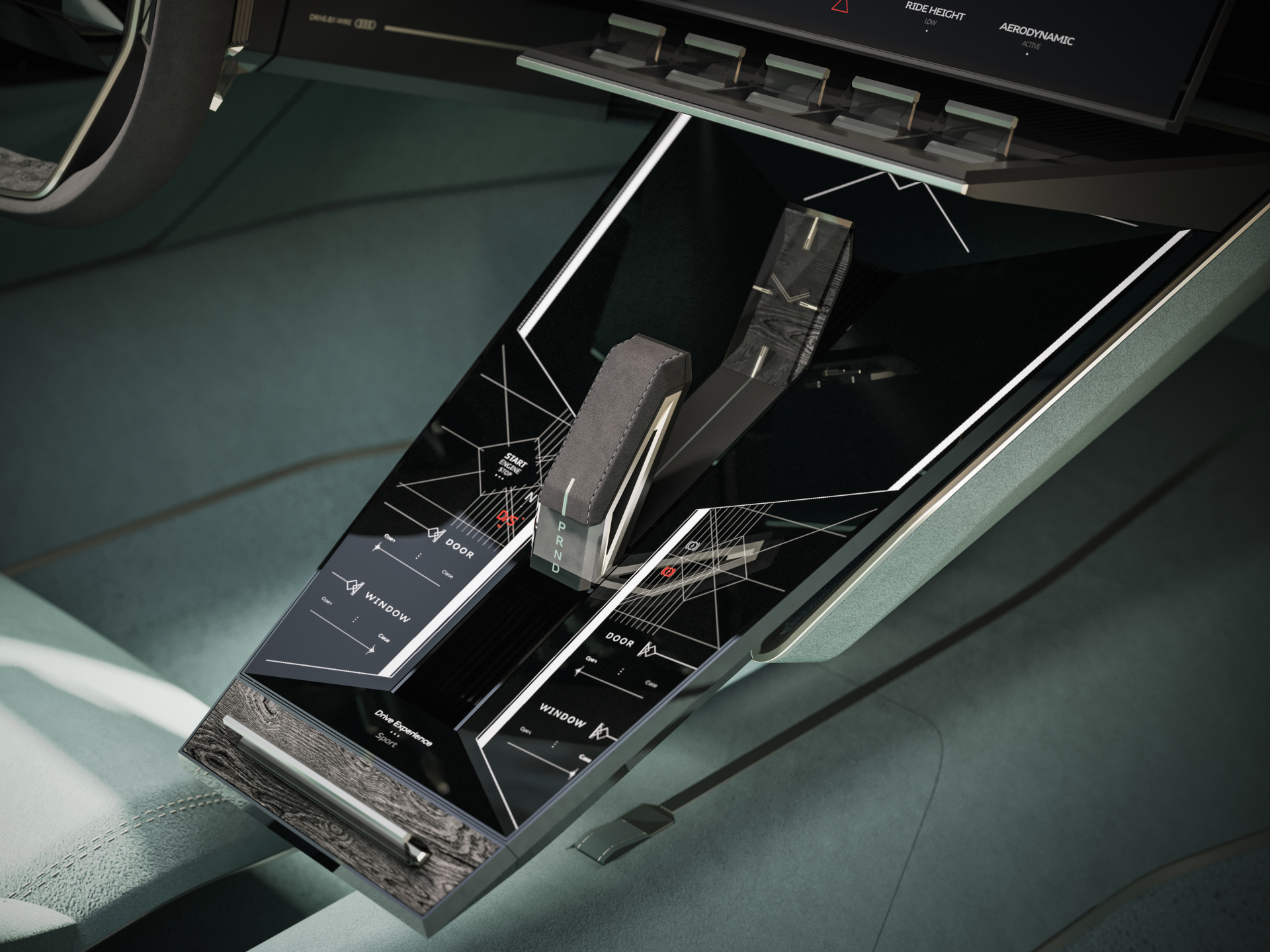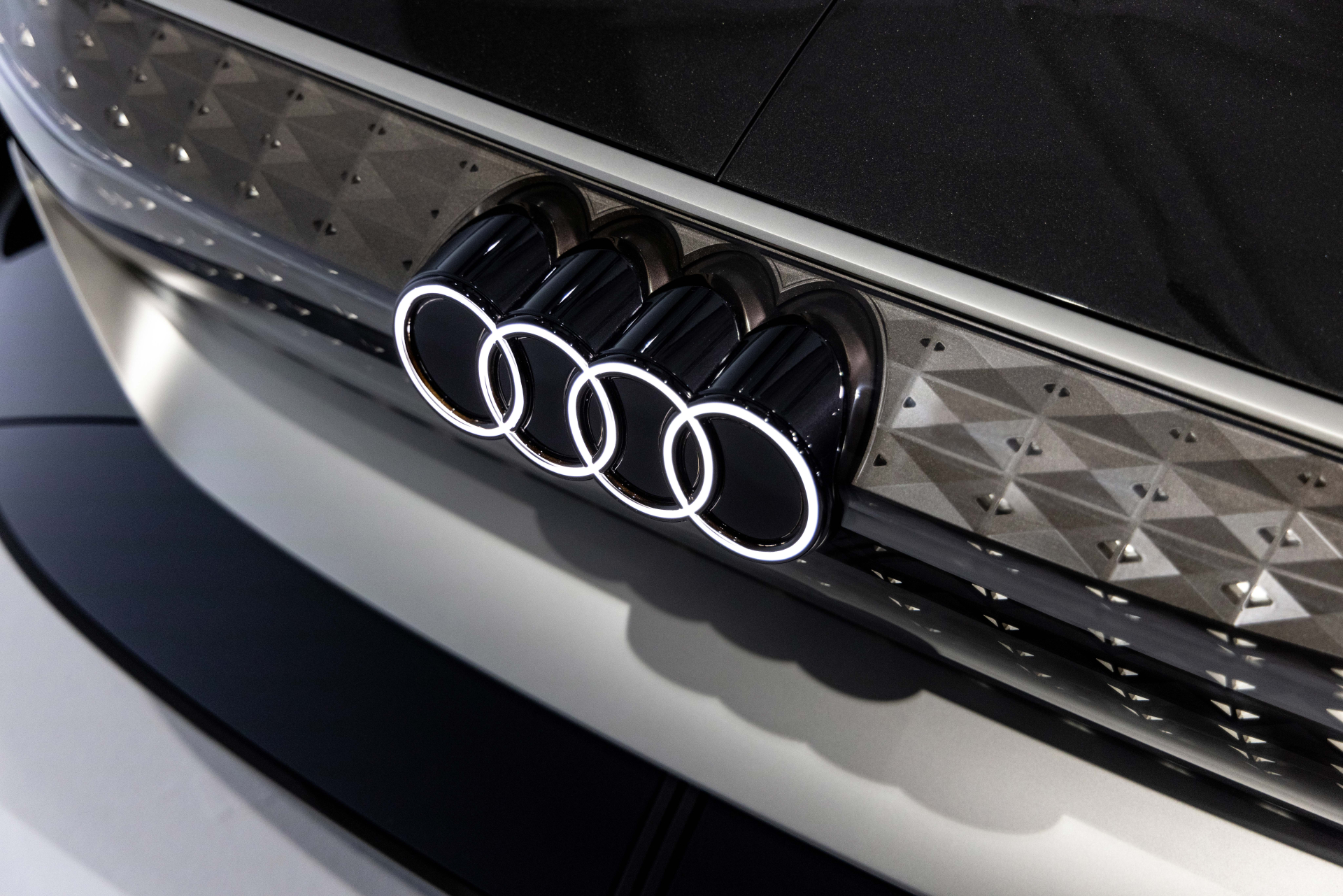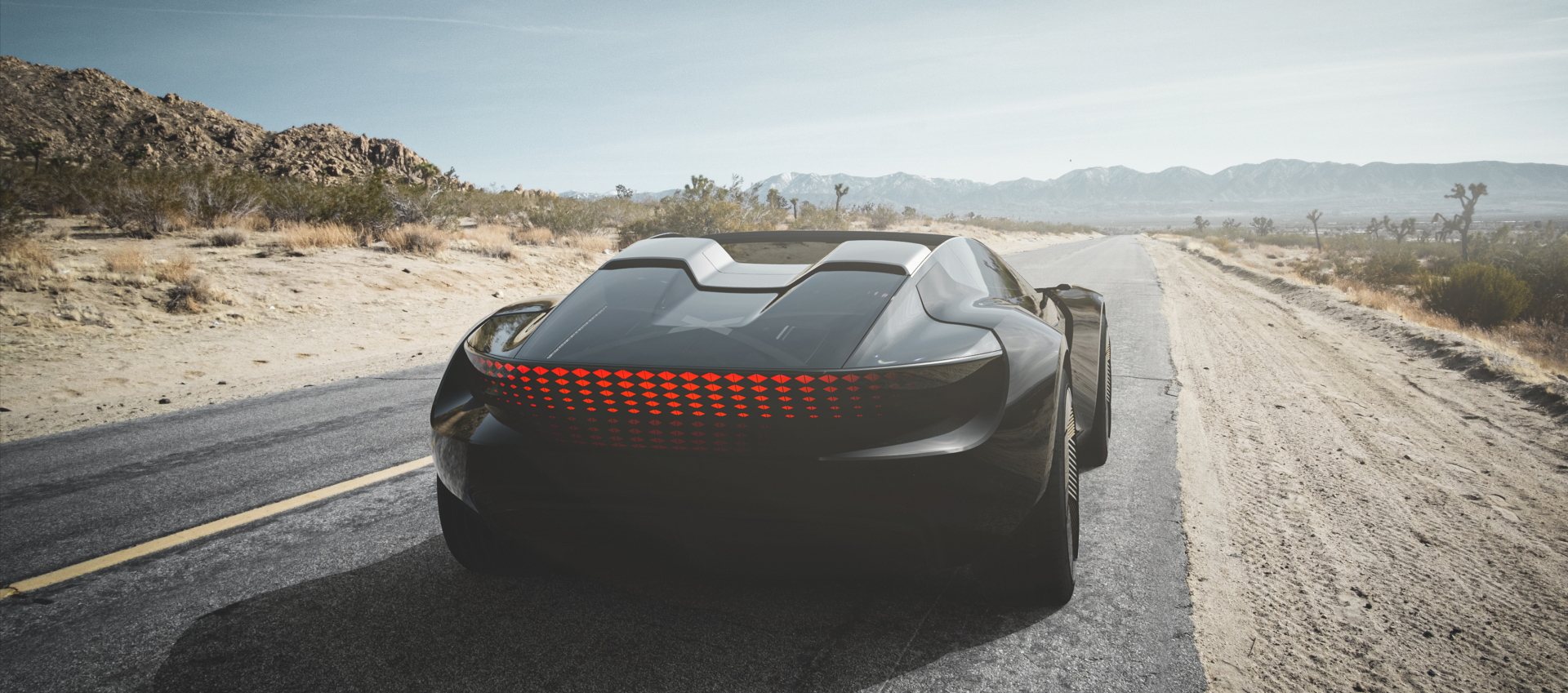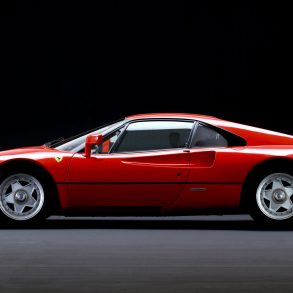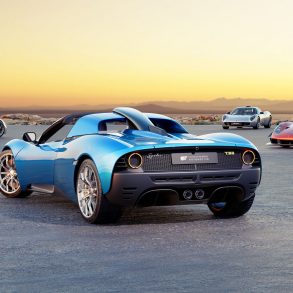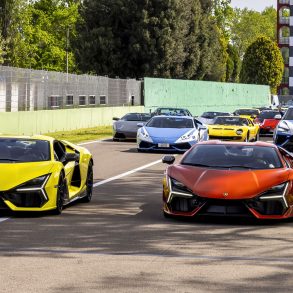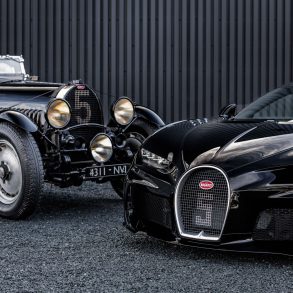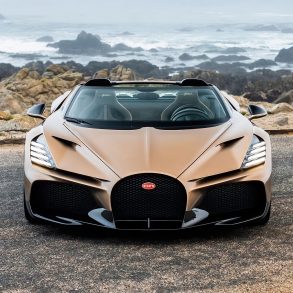Audi will be releasing a new family of concept vehicles and recently, they’ve just unveiled the first and newest member, a breathtaking roadster. Dubbed the Audi skysphere concept, it is an electric-powered two-door convertible roadster that is related to the Audi design of tomorrow. The car is a representation of the brand’s vision for the progressive luxury segment of the future wherein the interior transforms into an interactive space while the vehicle serves as a platform for captivating and powerful experiences. The car was brought to life with autonomous driving, a seamless digital ecosystem, and a revolutionary redesign of the interior.
The Audi skysphere concept is the embodiment of how the brand is redefining luxury automobiles in the future. It is not anymore simply about driving. The clear objective of the concept car was to provide its occupants gripping and world-class experiences.
To be able to offer passengers the most freedom; the Audi skysphere concept have offers two different driving experience: a sports experience and a grand touring experience. The two options utilize a great technical detail: the variable wheelbase. Using electric motors and a sophisticated mechanism wherein body and frame components slide into each other allowing the vehicle to change the wheelbase and exterior length of the vehicle by 250mm. The ground clearance of the vehicle is also adjusted by 10mm to maximize comfort and driving dynamics.
The driver only needs to press a button to choose their own driving experience. In Sports mode, the car will have a reduced wheelbase and the driver will be able to pilot the 4.94-meter e-roadster themselves. The rear-wheel steering makes sure that despite the dimensions, the car is still very agile. In Grand Touring mode, the passengers are autonomously chauffeured around, and they can simply enjoy the scenery, the sky, the bigger legroom, as well as the services provided by a seamlessly integrated digital ecosystem.
In Grand Touring driving mode, the steering wheel as well as the pedals are hidden, opening up not just the space, but a whole new realm of possibilities for the passengers in the sporty convertible. At the same time, the Audi skysphere automatically tracks the road and traffic using its sensor system, driving its occupants safely to their destination.
Like the car’s interior design, the digitization and the ecosystem offer new realms of possibilities and worlds of experiences. Add Audi’s own services and capability to integrate digital services, the possibilities are practically limitless. Passengers are also able to share their experiences with everyone using social media as they can share images of the interior and the surrounding area. Some everyday tasks are also handled by the vehicle, going above and beyond simply the drive. The autonomous Audi skysphere concept gives its passengers information about their current destination. It also independently takes care of parking and charging.
Audi skysphere to be unveiled in California
As part of the upcoming Monterey Car Week, the luxury roadster will be making its public debut on August 13, 2021, at the legendary fairways of the Pebble Beach golf course. So, in a way, the vehicle will be making its debut around its home turf as the concept car was conceptualized and designed at the Audi Design Studio in Malibu which is very near the legendary coastal road connecting the Los Angeles suburbs with northern California, the Pacific Coast Highway.
The creative minds behind the project are studio manager Gael Buzyn and his team. For inspiration, they found a legendary classic model from the brand’s own history, the Horch 853 roadster. In the 1930s, the 5.20-meter convertible was the definition of luxury. In 2009, it won the Pebble Beach Concours d’Elegance.
The inspiration that the team took from its predecessor was mainly limited to the dimensions and proportions as it had a long front end and a compact cabin. The Horch is powered by an impressive straight-eight engine with a 5-liter displacement. The Audi skysphere on the other hand was equipped with mostly electric drive components between the front axle and the windshield like the charger and DC/DC converter. The adaptive wheelbase also has actuators and electronic and mechanical components. The concept car was also specially designed to have a spacious trunk with two golf bags.
Audi skysphere drive system: 465 kW of power
Design project manager Gael Buzyn shared, “New technologies like electrification, digitalization, and autonomous driving gave us the opportunity to create an experience that goes way beyond the one that typical roadsters offer today.”
Placed on the powered rear axle is an electric motor that delivers power to the wheels of the Audi skysphere. The roadster weight around 1,800 kilograms and it has 465 kilowatts of power and 750 Newton meters of torque. The weight distribution of roughly 60 percent on the power rear axle gives more than enough traction and it can accelerate from 0 to 100 kph is only four seconds if needed.
The battery modules of the Audi skysphere are positioned behind the cabin, perfectly positioned for the roadster’s center of gravity and agility. There are other modules between the seats in the center tunnel of the interior, which was also chosen for the car’s vehicle dynamics. It is expected that the battery’s capacity will be more than 80 kWh, giving the car more than 500 km of range according to the WLTP standard, for the economical GT mode.
Audi skysphere chassis: rear-wheel steering and adaptive air suspension
The roadster has double wishbone axles in the front and rear. They forged or cast the upper and lower wishbones from aluminum. A steer-by-wire system controls both the front and rear wheels to take care of steering. Since the system is not connected to the front-axle mechanically, with a touch of a button, the driver can choose different steering ratios and steering settings. This lets the steering be controlled and changed from extremely direct to comfortable, from high self-aligning forces to minimal self-aligning forces, like in parking as an example. Also contributing to the car’s small turning radius are the rear-axle steering and the adaptive wheelbase.
The proven Audi chassis technology guarantees that the suspension gives the needed level of versatility, and the latest technology in Audi’s adaptive air suspension has been used in the concept car. It features three independent air chambers that gives a comfortable base suspension. For those who want a more sporty ride with faster acceleration, the individual chambers can be deactivated resulting in the characteristic curve of the spring becoming more progressive, with the roll and pitch reduced to a minimum. The aerodynamic drag is reduced by lowering the body by 10 mm and it is quite relevant in long distance drives.
The active suspension of the Audi skysphere plays an important part in the versatility of the roadster’s handling characteristics. When coasting along, to compensate for the road’s unevenness and undulations the individual wheels are selectively raised or lowered, thanks to the symbiosis between the digital predictions of the navigation system and the sophisticated control and actuation systems of the active chassis. Mounted on aerodynamically styled 23-inch alloy rims, the 285/30 tires provides the perfect balance between a sporty, active driving style with high longitudinal and lateral acceleration and suitability for long-distance trips because of minimal rolling resistance.
Audi skysphere exterior:
When it comes to the footprint of the Horch 853 and the Audi skysphere, the similarities are pretty obvious, with a length of 5.23 and 5.19, and a width of 1.85 and 2.0 meters. The height of the two vehicles bear a striking difference however, as the iconic design of the Horch stands 1.77 meters tall compared to the Audi skysphere’s 1.23 meters with improved center of gravity and aerodynamics. The concept car pays a fitting tribute to the classic model but was able to avoid being a simple retro imitation.
Aside from the dimensions, the roadster’s lines are what’s really important. Sporting the typical wide curved and flared wheel arches, the skysphere puts emphasis on the wide track which is a visible clue to its dynamic talents. From the side, the proportions of the roadster are simply impressive with a long and short overhang, especially at the front. The wheel arches and front hood surfaces are curved organically. The rear end was developed in a wind tunnel and it brings together elements of a speedster as well as a shooting brake with huge glass surfaces seen in a traditional streamlined design. Two overnight bags specifically designed for the Audi skysphere were given space under the glass and are kept secured by straps stretched in a crosswise pattern.
The front end, though it does not act as a radiator grill, still proudly sports the typical Singleframe of the brand and the three-dimensionally designed, illuminated four rings emblem. The whole Singleframe and the connected surfaces on the sides are also designed with white LED elements to serve as a stage for visual effects that are both functional and as moving welcome sequences as the car is opened and closed.
The gentle dimming and structured, rhythmic pulsating light of the Audi skysphere is simply elegant, while the daytime running lights located at the front sections gives the car a resolute, focused “gaze.” When the wheelbase is shifted, the front and rear LEDs show a specially composed dynamic sequence.
A digitally controlled LED surface dominates the rear and even extends across the vehicle’s entire width. Across the vertical rear surface are numerous red LEDs that are scattered like rubies. When the lighting units are turned on or off, reflections produce a dynamic lighting and shadow effect.
When changing the operating mode from GT to Sport and changing the wheelbase, the light signature is also changed showing the Audi skysphere concept’s changed character, especially in the Singleframe area.
The rocker panels are one of the main features when the concept car is viewed from the side. It looks like it protrudes into the rear wheel arch, but it is an important feature when changing the wheelbase pushes it backwards. Attached to the front end of the car is the rocker panel. When it moves the panel also slides towards the rear below the fixed door. The process allows the wheelbase to be reduced from the standard size of an A8 L to turn into a more compact size like the curve-compatible Audi RS 5, which is a difference of 25 centimeters. The changes are not just technical, it is also visual, and most importantly, it also changes the driving experience.
The Audi skysphere concept undoubtedly have two personalities: a GT and a luxury sports car. The main differences could only be appreciated in the interior, because after the rear-hinged and wide-opening doors, the Audi skysphere provides very contrasting experiences.
Audi skysphere interior:
For the three upcoming concept cars lined up: Audi skysphere, Audi grandsphere, and Audi urbansphere, Audi wants to concentrate on the space surrounding the passengers, hence the sphere moniker. They have placed the interior at the center of their designs with the aim of making it an experience for their passengers. All three vehicles will be designed for level 4 autonomous driving, which means that in certain defined road and traffic situations, the driver the completely delegate responsibility to the car and does not need to intervene.
Due to this, control elements like the pedals and steering wheel can be swiveled into an invisible position and to visually be totally removed from the interior. All passengers, even the one in the driver’s seat, is now given a new kind of freedom where they can all relax in the open air, bask in the wind and the scenery, or even connect to the internet and social media thanks to the connection to the digital ecosystem in the Audi skysphere.
Without the controls, the interior looks light, spacious, and in a lot of ways, inspired by the Art Deco universe. The seats are simultaneously comfortable and exudes the elegance of designer furnishings, while completely fulfilling its role as a car seat in driving mode. It doesn’t take any compromises serving as a side support as well as providing safety features. The seats are upholstered in microfiber fabric that were sustainably produced. Due to the seats’ variable position in the interior, they offer the same freedom to move and legroom that is only experienced in the first class on an airplane. For the car’s interior, they used synthetically produced imitation leather and environmentally certified eucalyptus wood, as well as other sustainably manufactured materials to create an unmatched luxury experience.
When the Audi skysphere concept engages the driver-operated mode, the interior then transforms into an ergonomically perfect cockpit. The instrument panel and the monitor panel on the center console, along with the chassis and body, move to the rear. All the controls, which includes the steering wheel and the pedals are back in their typical positions.
The dashboard and the upper area of the center console have large touch monitor surfaces, 1415mm wide and 180mm high, and they’re used to operate the vehicle and infotainment system. When in Grand Touring mode, the monitors can be used to display stream movies, video conferences, or simply content online. The doors also have small touch panels that can operate the air conditioning.
The luxury convertible is also equipped with a high-quality sound system and delivers concert hall audio quality even while in motion. The speakers are hidden behind door panels and rear interior wall, producing surround sound. Even the shape of the headrests were designed not only to prevent turbulence, but also to remove annoying wind noise.
The Audi skysphere experience:
The Audi skysphere and Audi grandsphere, along with the Audi urbansphere which is scheduled to make its debut in 2022, are the three concept cars that Audi is using to demonstrate their vision of progressive luxury. So, Audi is creating a vehicle experience that transcends the purpose of using a car simply to get from point A to B, elevating the driving experience itself to completely new heights.
The new concept cars showcase a new design that basically reimagines the interior and the passenger compartment, as the focal point of the vehicle, a complete turn around to the times when requirements of technology take precedence over the passenger experience. This concept can be seen in the variable layout of the car’s interior, the way the controls disappear, and the sheer space in the cabin.
When in Grand Touring mode, it enables the passengers to enjoy a smooth and enjoyable journey as it also provides new service offerings. A number of service options related to the current trip are also available to said passengers like the planning of a spectacular scenic route, or their pick of restaurant and hotel options.
Passengers can also customize infotainment options like linking the on-board streaming service to music and video providers that the clients use at home. As an additional feature, Audi also plans to offer personalized and exclusive options for their luxury car users in the future, like cultural events, concerts, or even sporting events that can only be attended upon special invitation. With this, the Audi skysphere concept will become the stage for passenger experiences that will broaden horizons beyond simply being a ride.
The Audi Group is one of the most successful automobile and motorcycle manufacturers in the premium segment, holding luxury brands like Audi, Lamborghini, and Ducati. The company has a market presence in more than 100 markets all over the world. They also produce their cars in 19 locations and 12 countries.
Subsidiaries of AUDI AG with complete ownership includes Automobili Lamborghini S.p.A. (Sant’Agata Bolognese, Italy), Audi Sport GmbH (Neckarsulm, Germany), and Ducati Motor Holding S.p.A. (Bologna/Italy).
Around 1,693 million automobiles were delivered to customers of the Audi brand, 48,042 motorcycles in the Ducati brand, and 7,430 Lamborghini sports cars in 2020 alone. In the 2020 fiscal year, AUDI AG reported a total revenue of €50.0 billion, as well as an operating profit before special items of €2.7 billion. There are around 87,000 people employed by the company all over the world, with 60,000 of those employees stationed in Germany.
With upcoming new models, innovative mobility offerings, along with a lot of other attractive services, Audi is slowly building the reputation of being a provider of sustainable Individual premium mobility.


